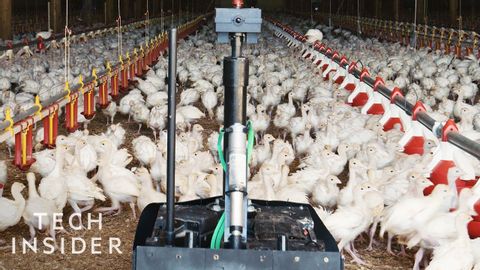四輪機器人如何改善明尼蘇達州的家禽養殖業? (How A Four-Wheeled Robot Is Improving Poultry Farming In Minnesota)
 沒有此條件下的單字
沒有此條件下的單字US /praɪˈɔ:rətaɪz/
・
UK /praɪˈɒrətaɪz/
US /ɪmˈpruv/
・
UK /ɪm'pru:v/
US /ˈɪnfrəˌstrʌktʃɚ/
・
UK /'ɪnfrəstrʌktʃə(r)/
- n. (u.)基礎設施 ; 基礎結構;組織架構;電腦基礎設施
US /ˈtɪpɪklɪ/
・
UK /ˈtɪpɪkli/
